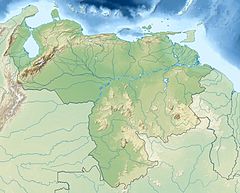| Capanaparo River | |
|---|---|
 Capanaparo River in Apure, Venezuela | |
| Location | |
| Countries | |
Capanaparo River is a river of Colombia and Venezuela. It is part of the Orinoco River basin in Venezuela. Together with the Cinaruco River, other smaller rivers and the area around them they form the Santos Luzardo National Park since 1988.
